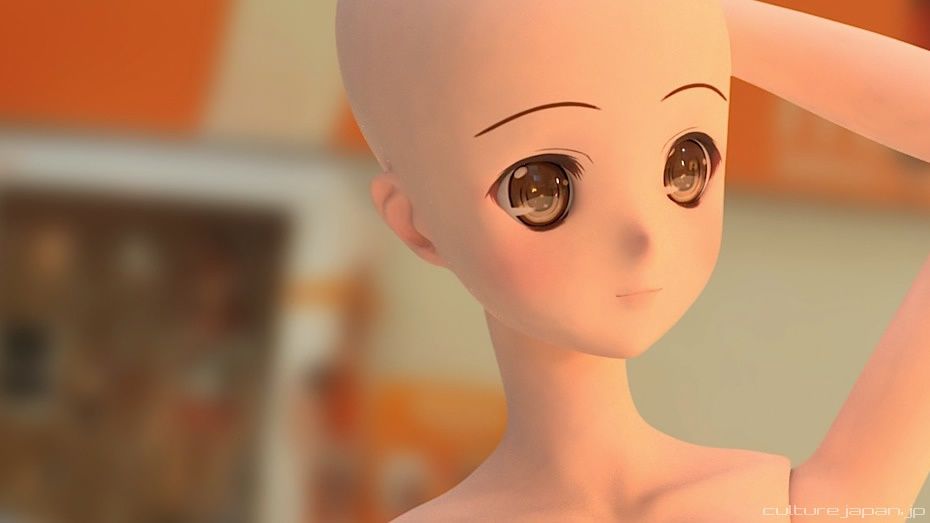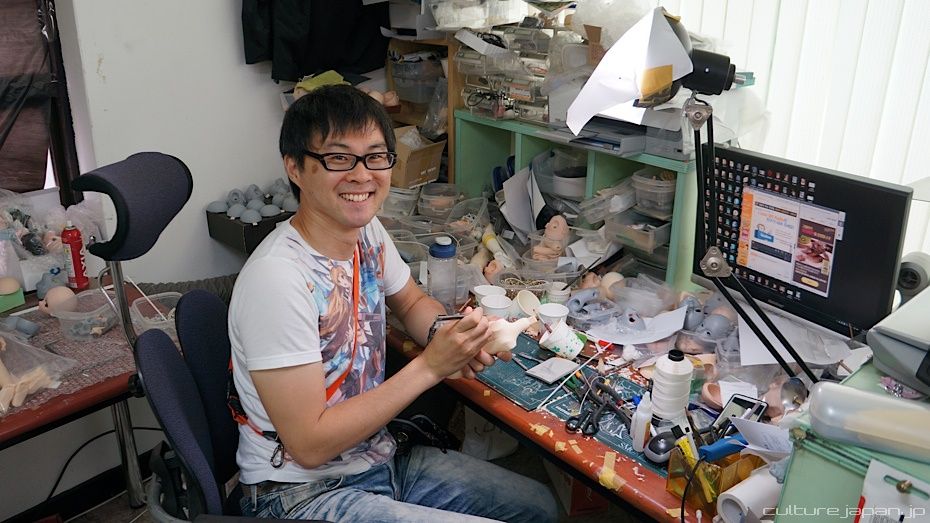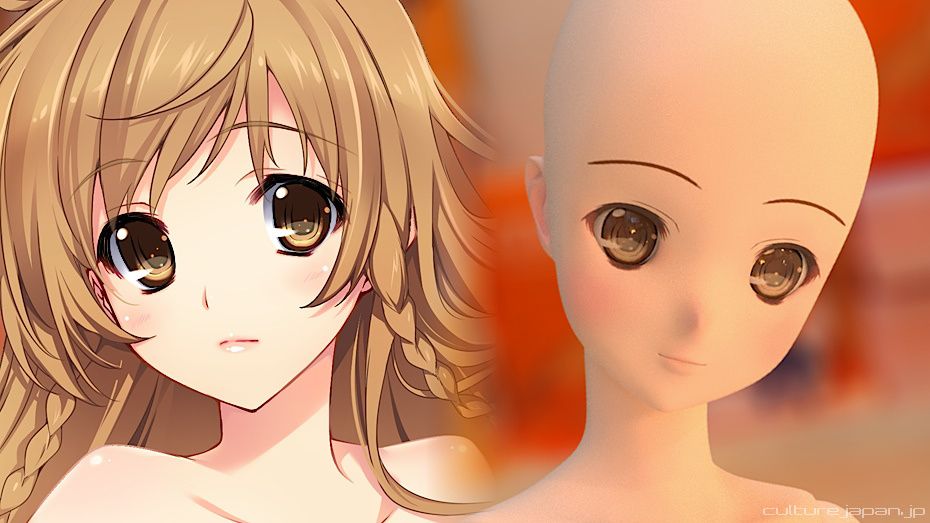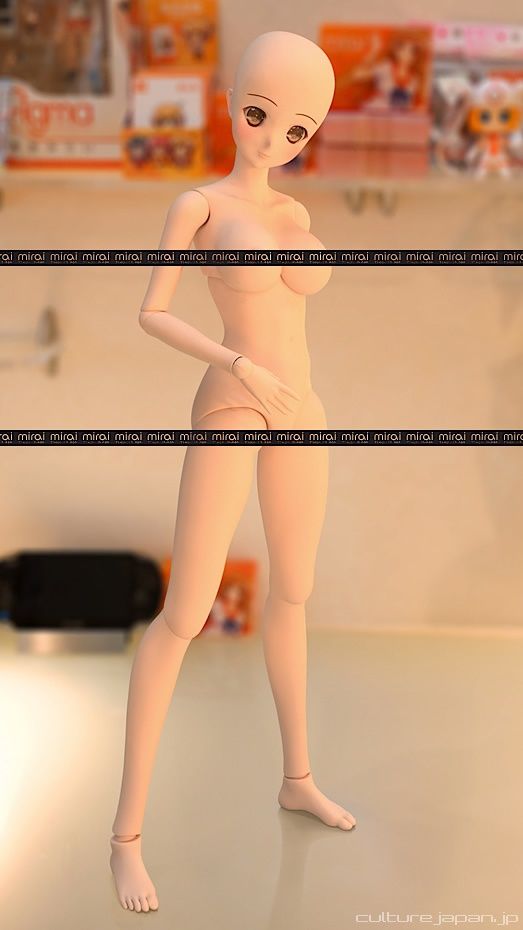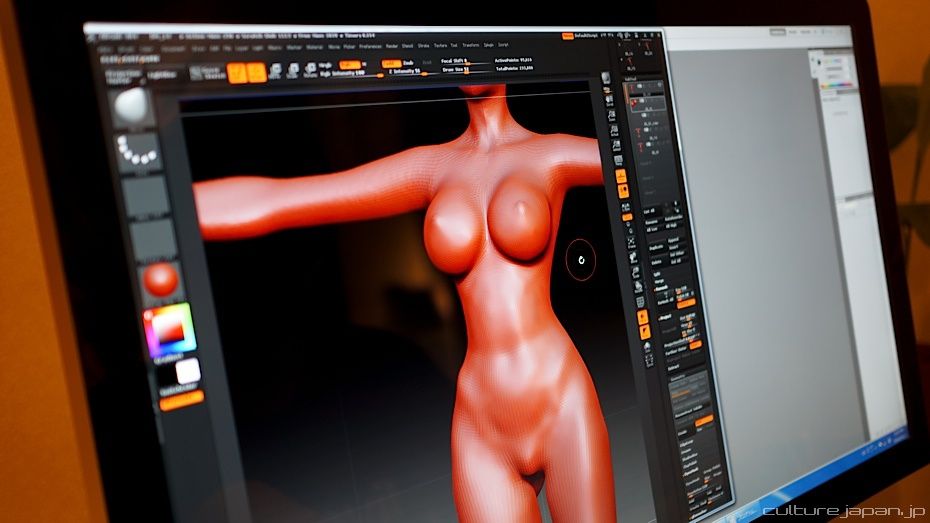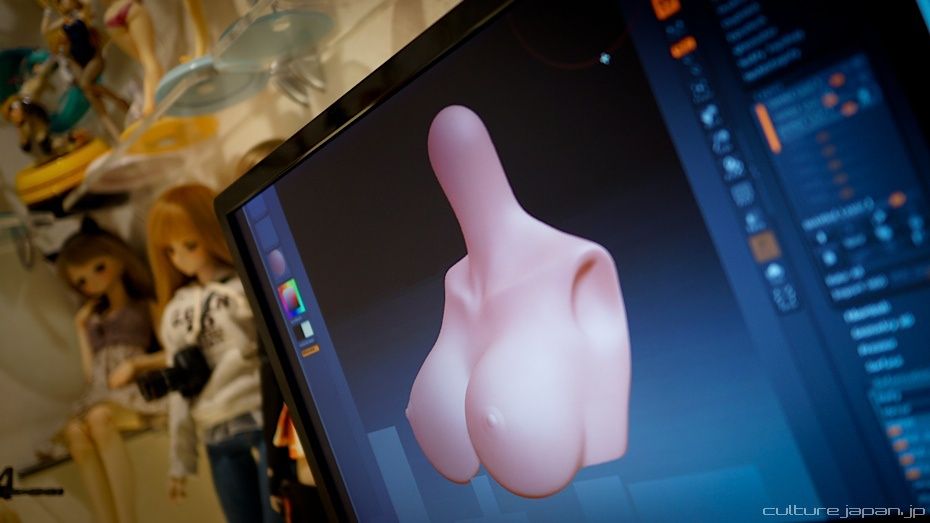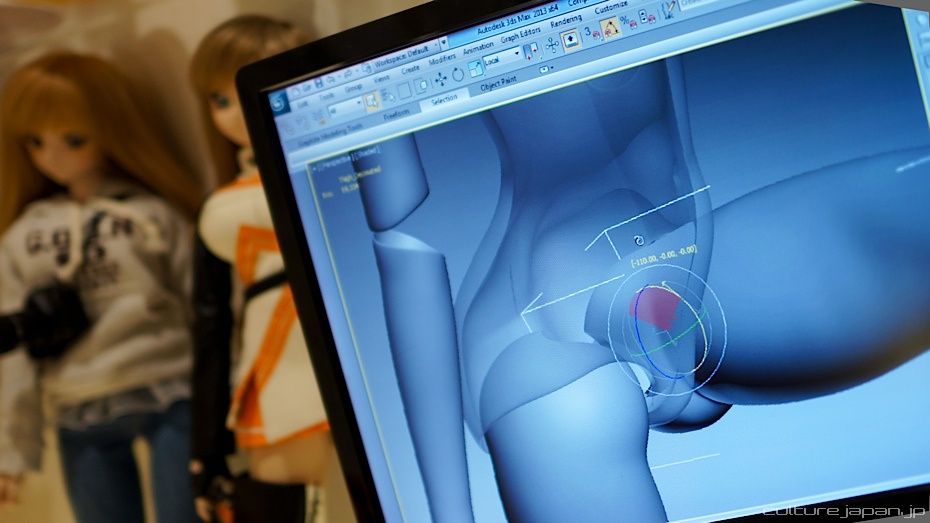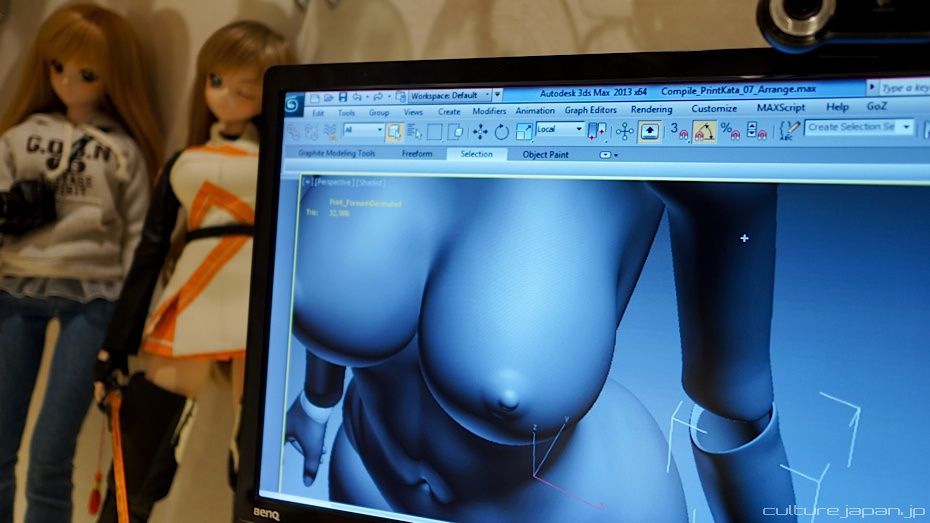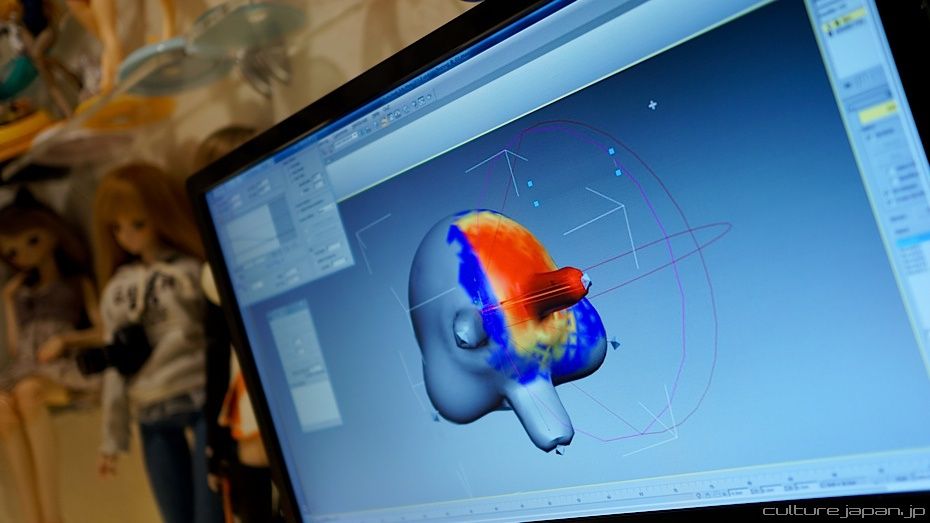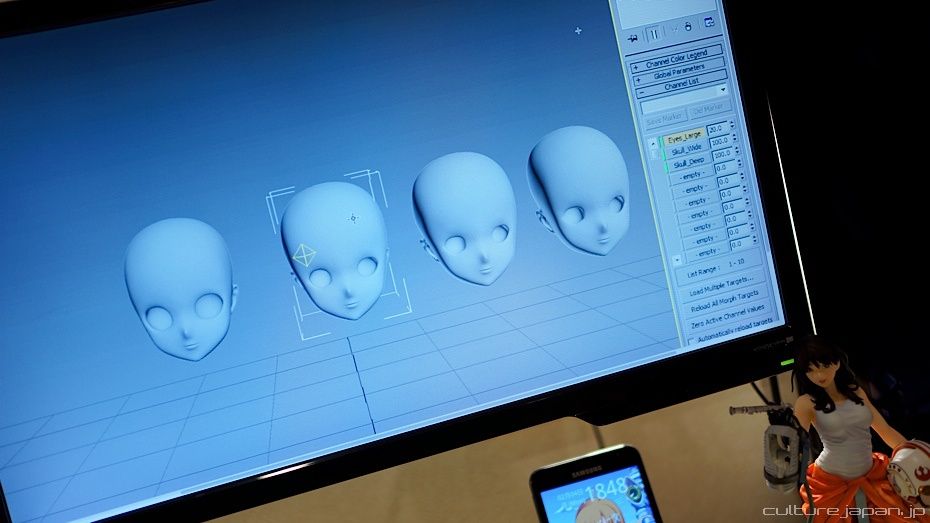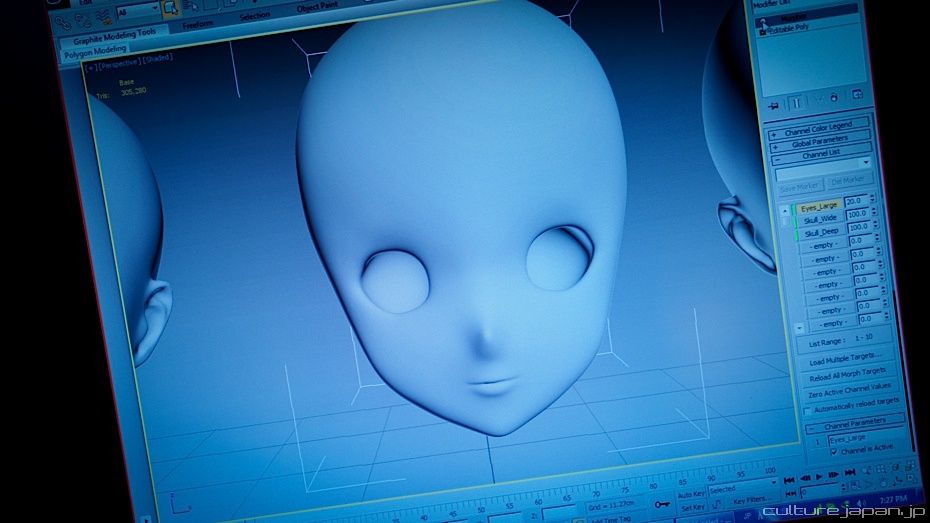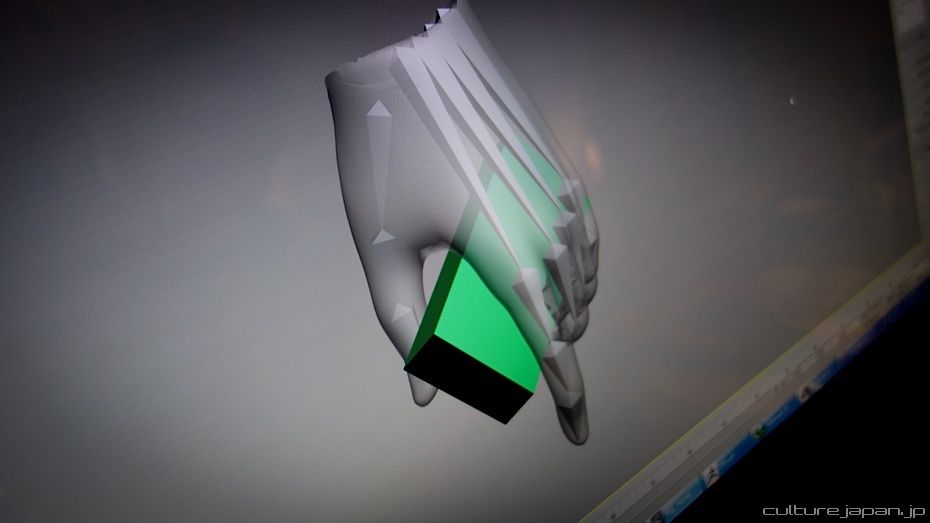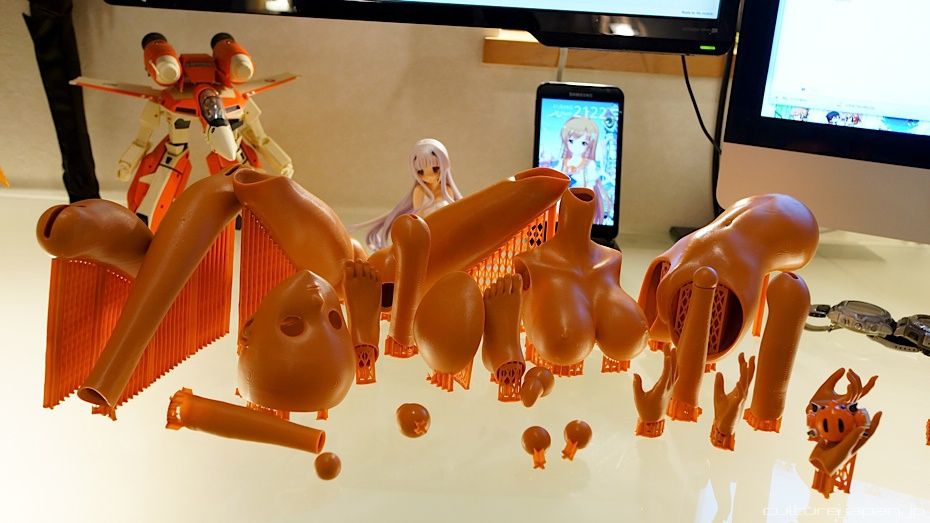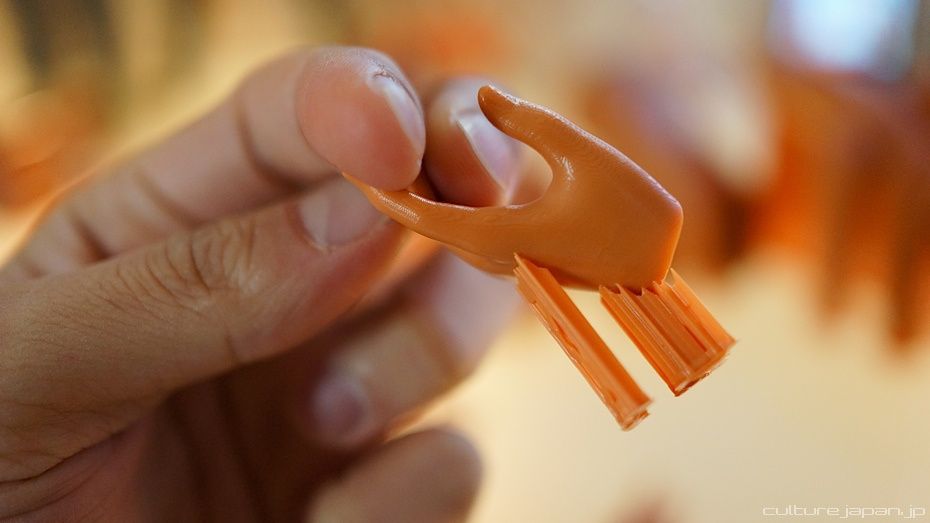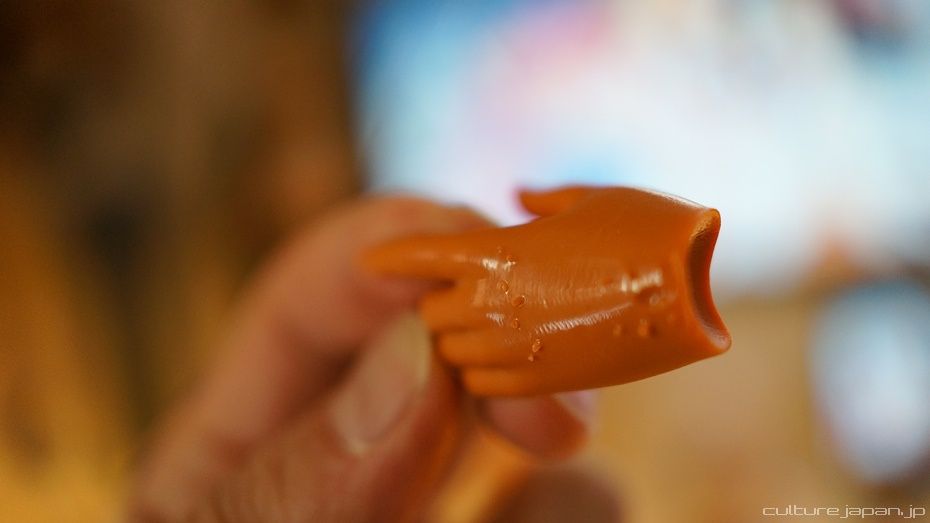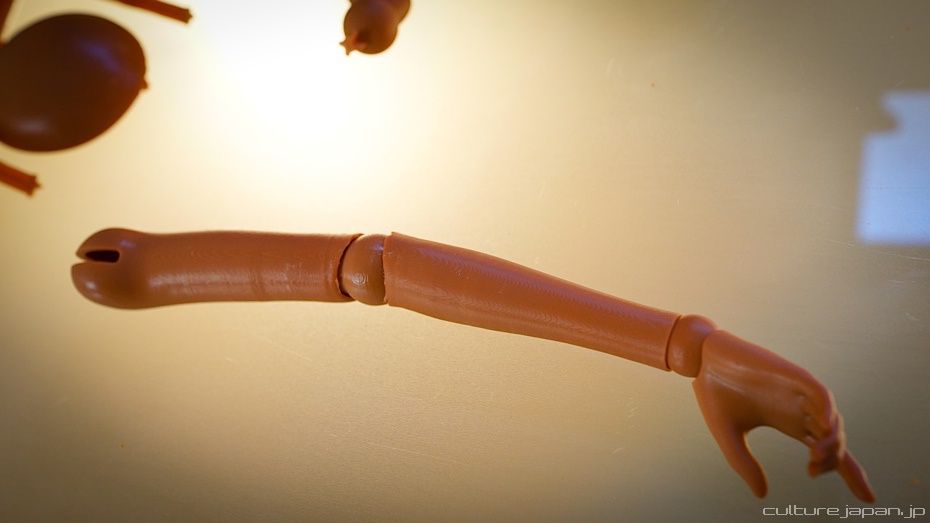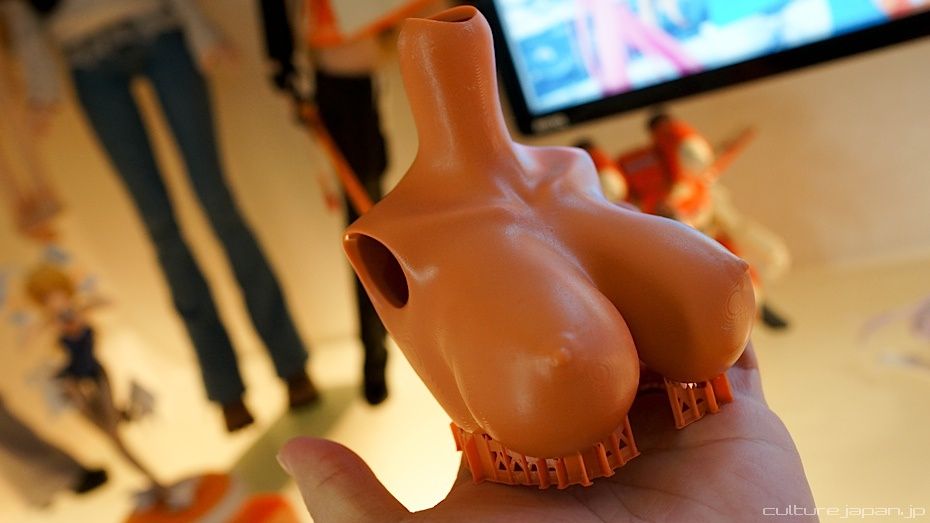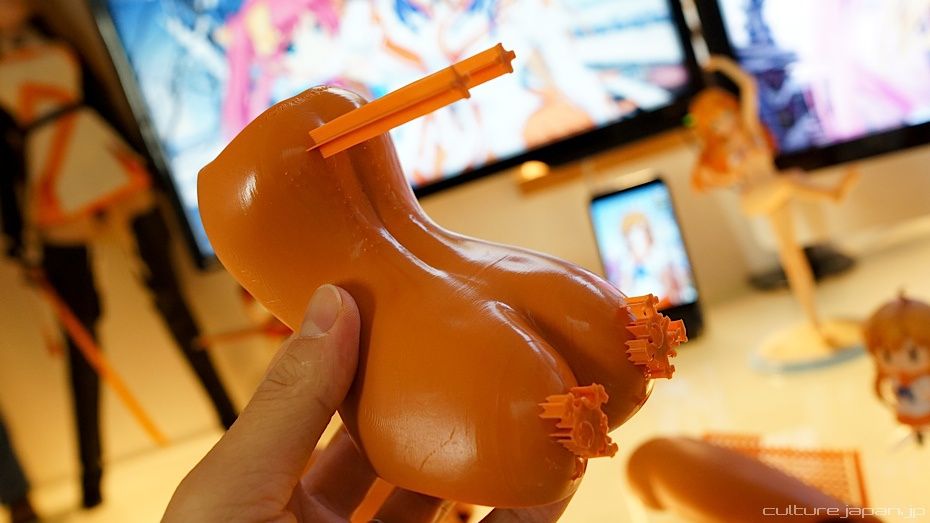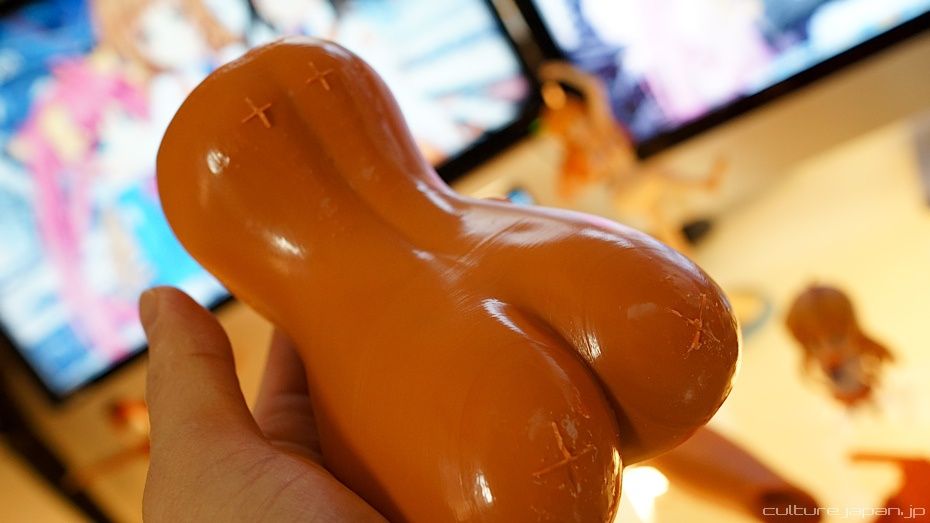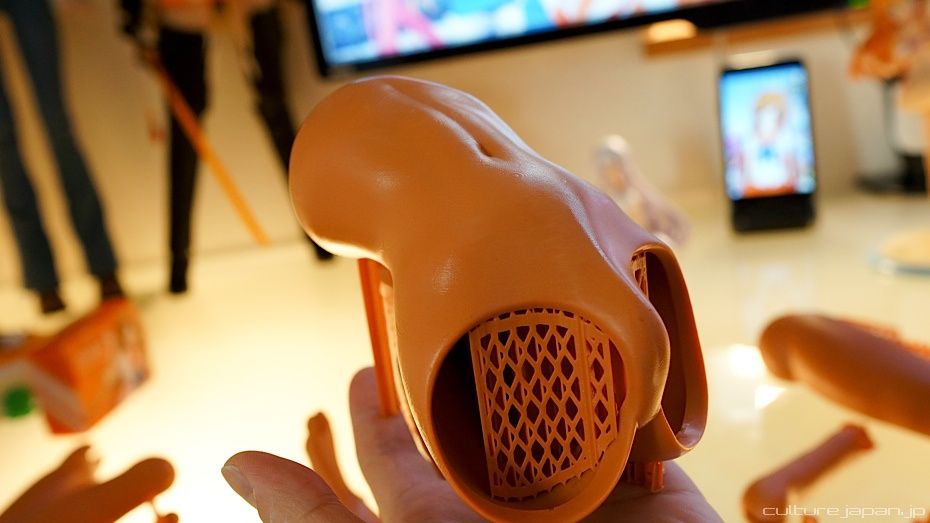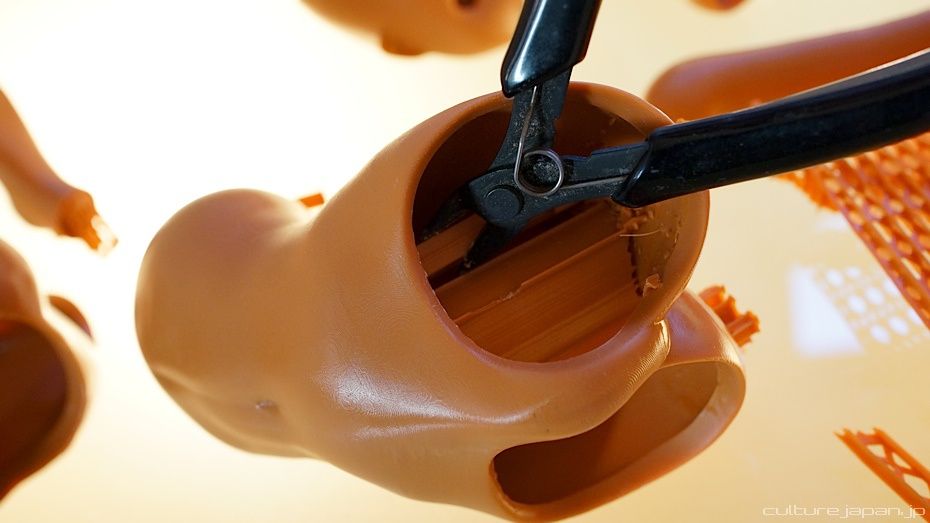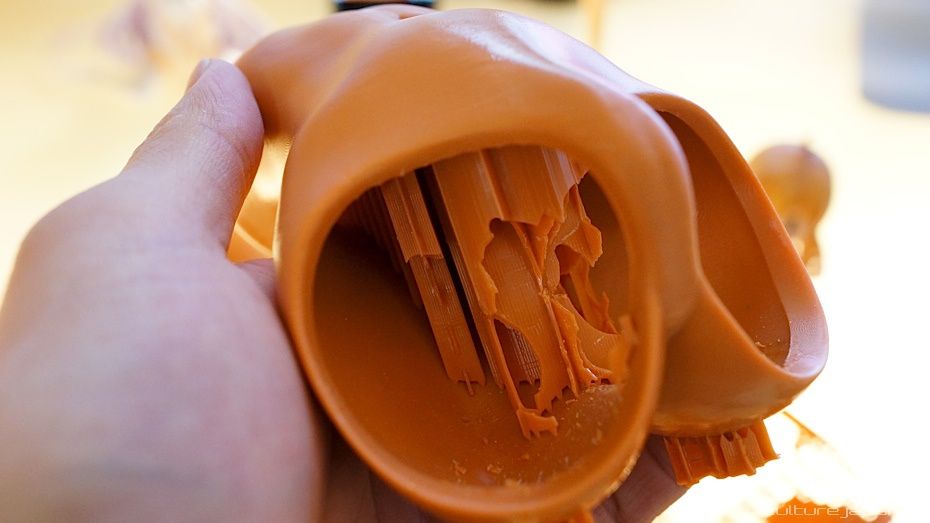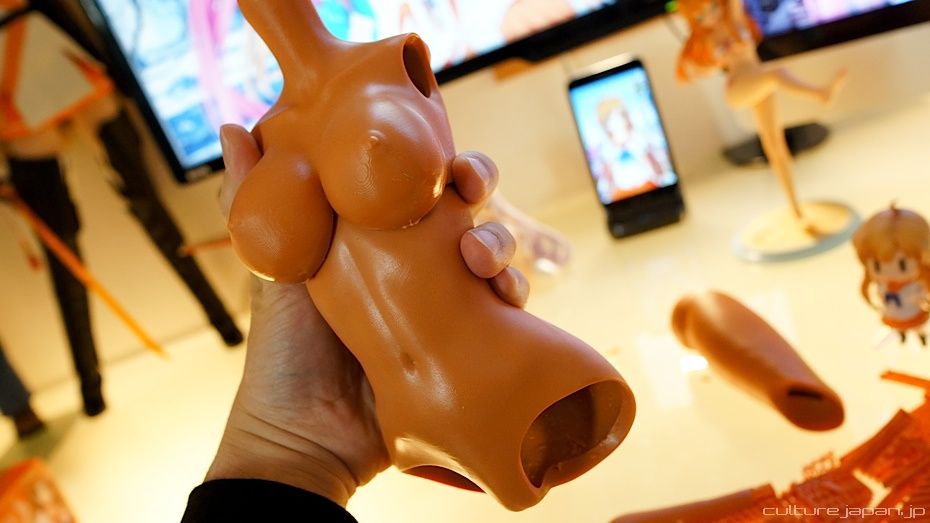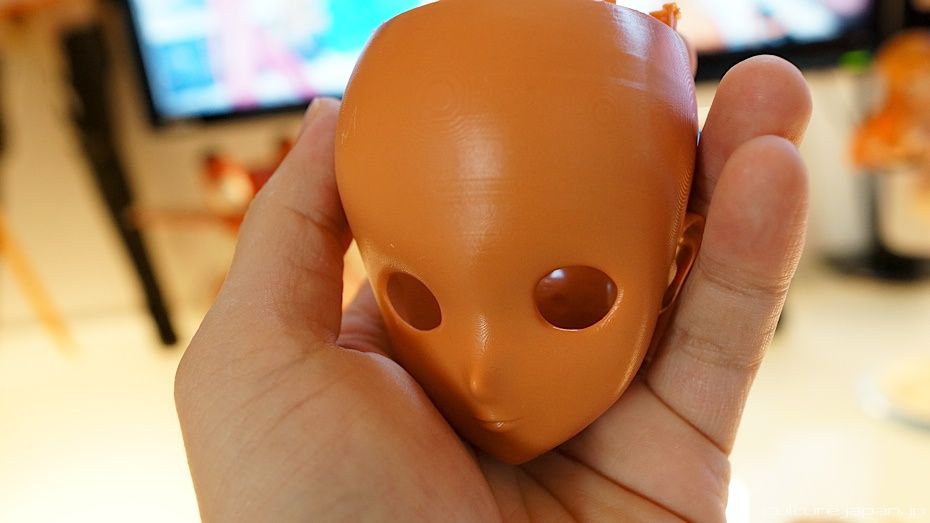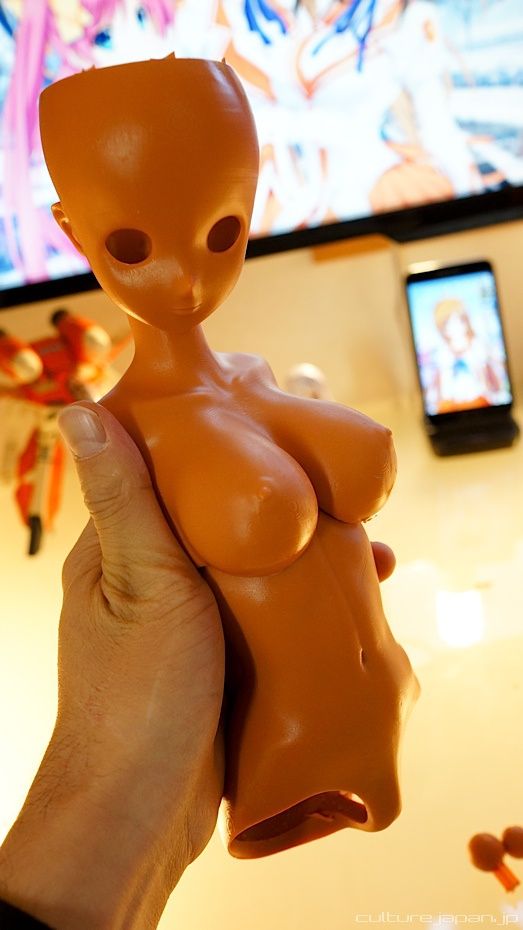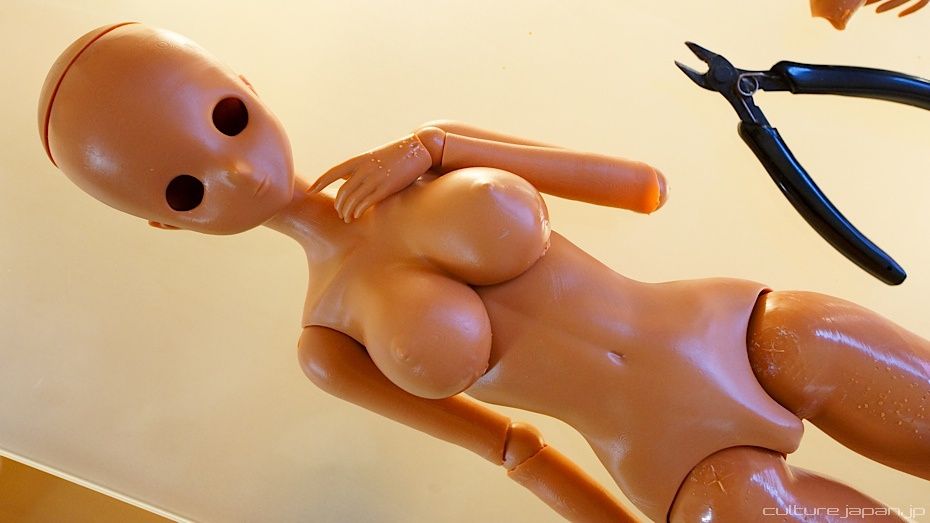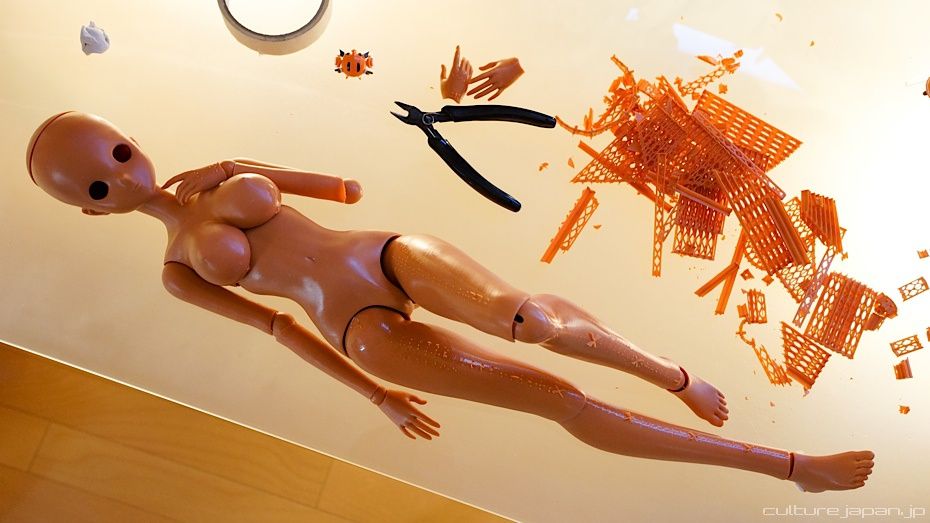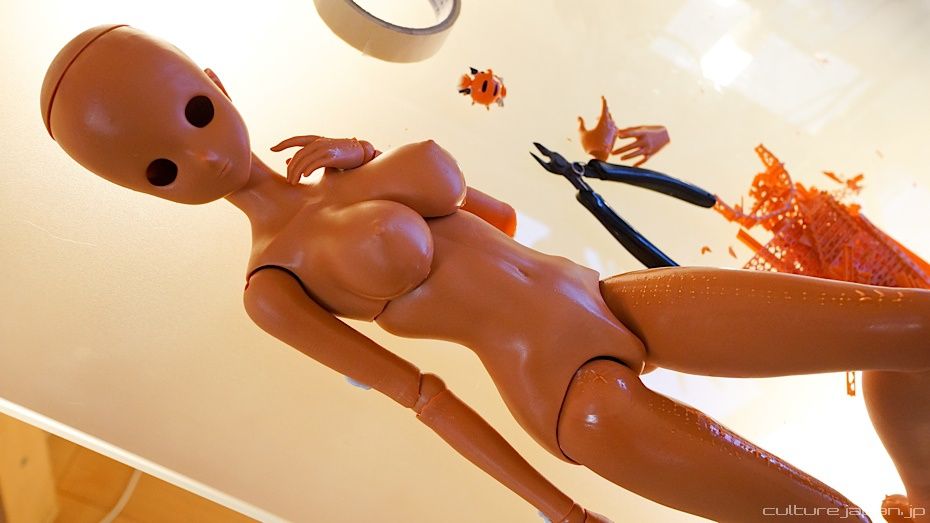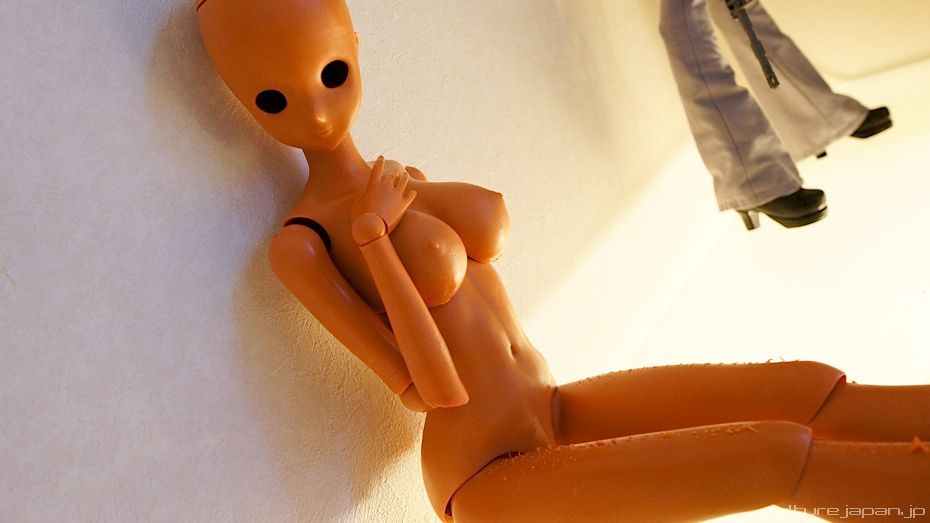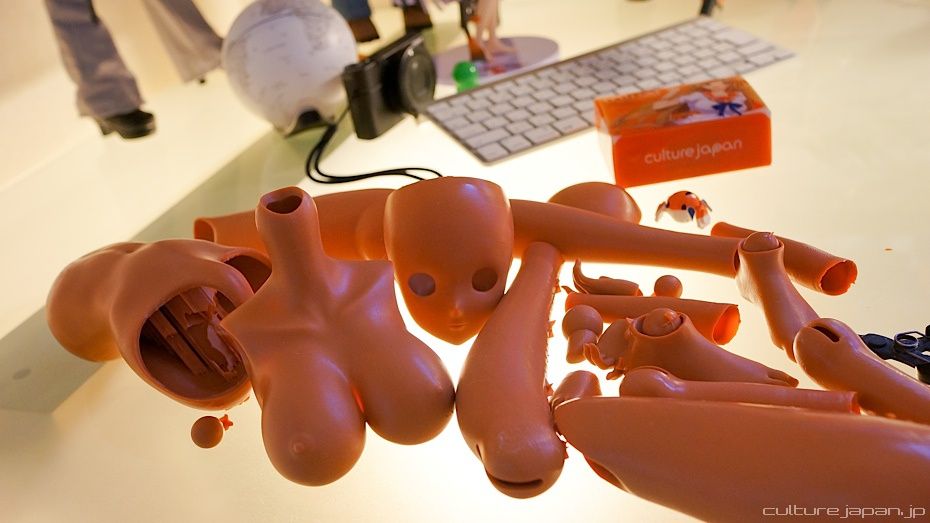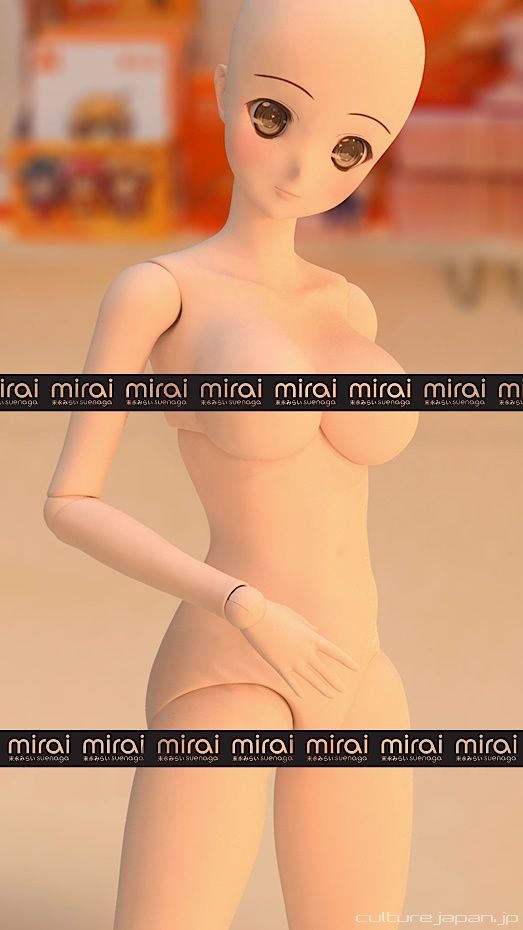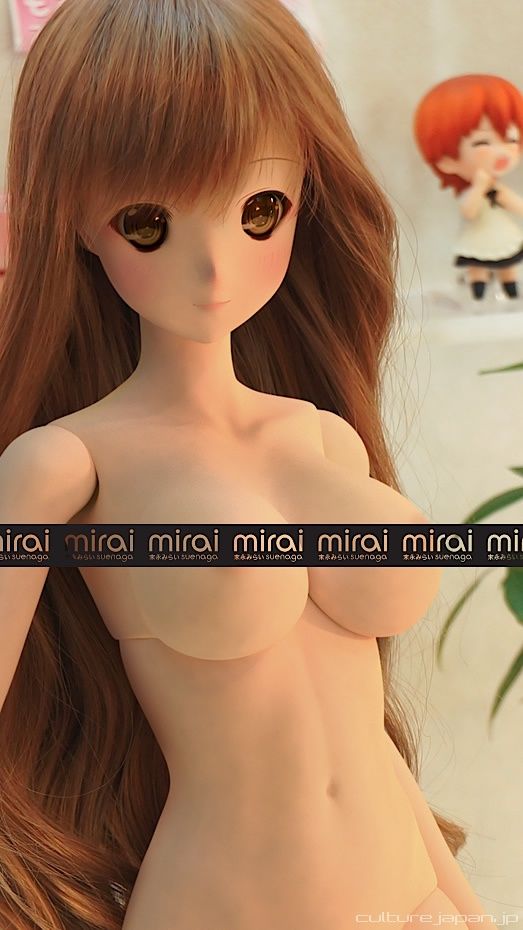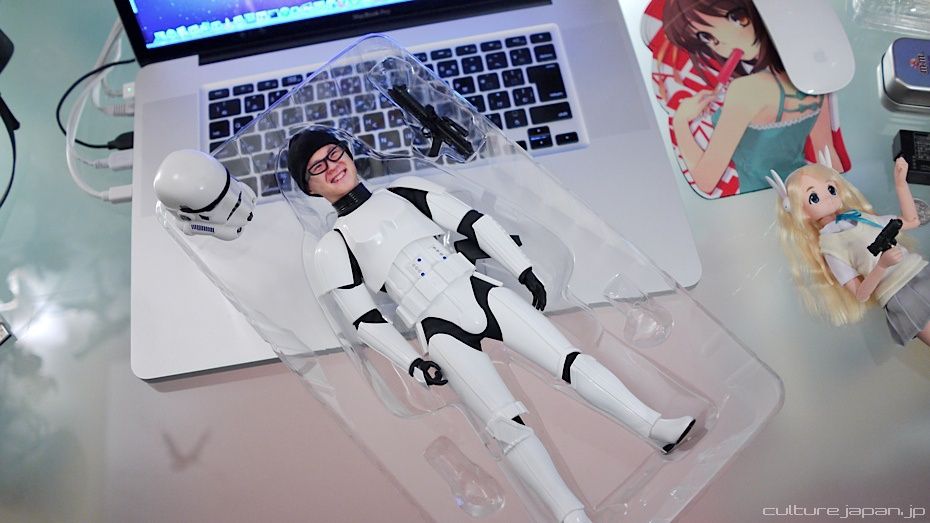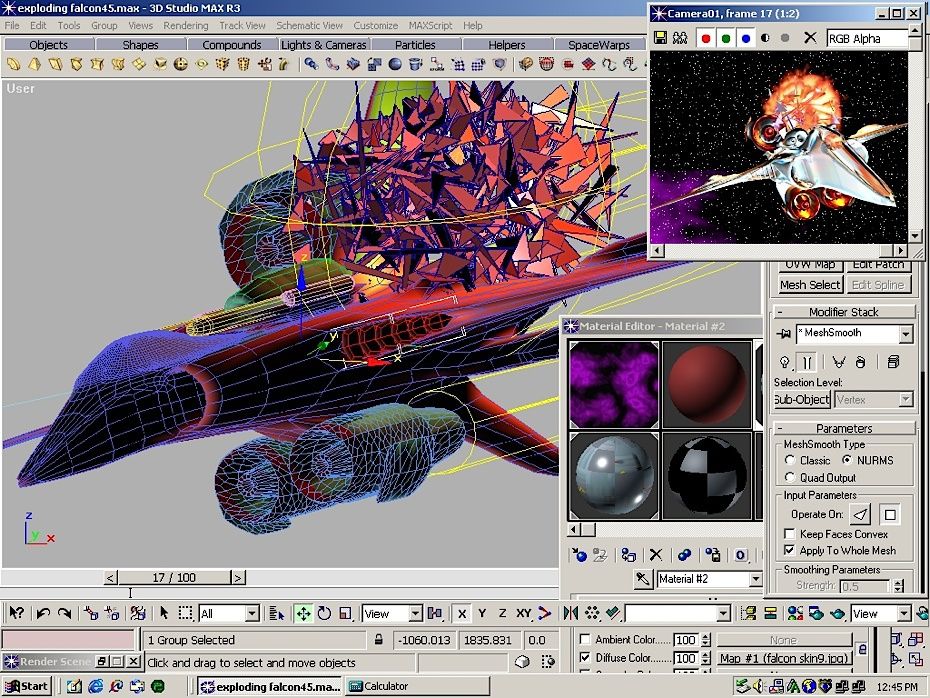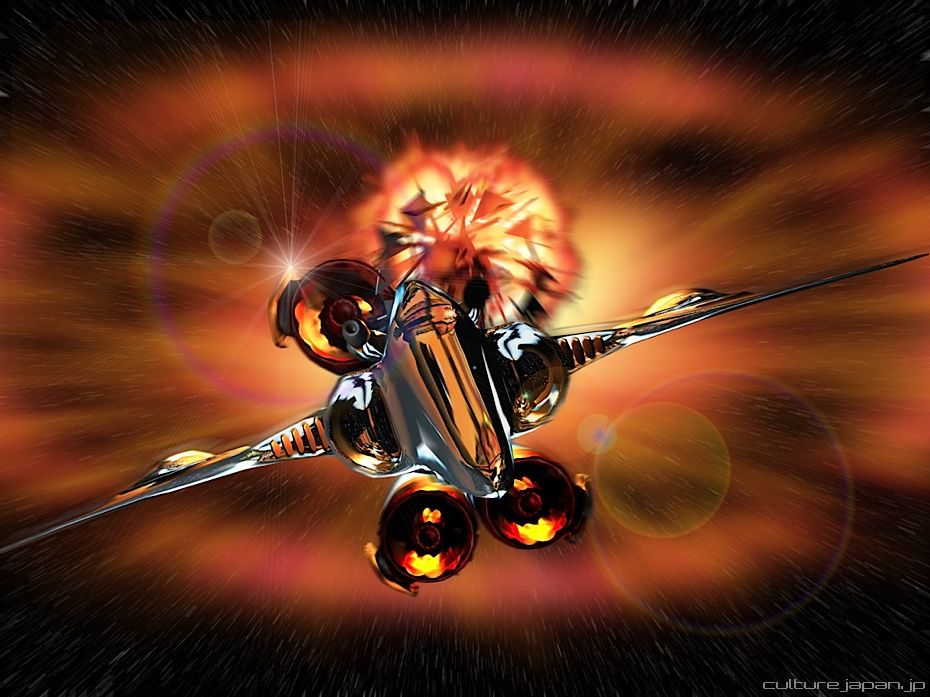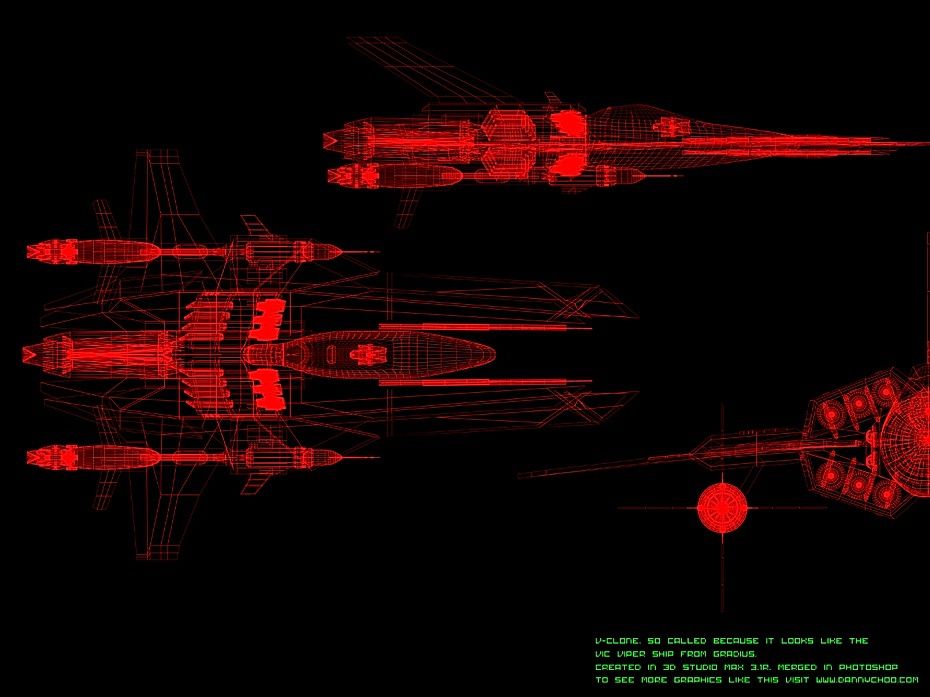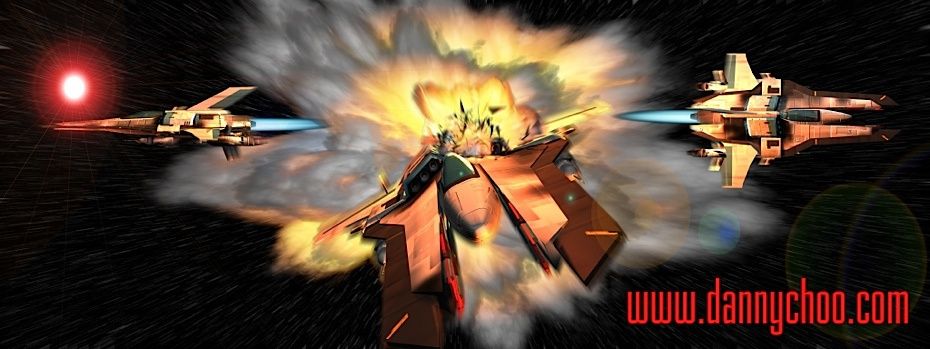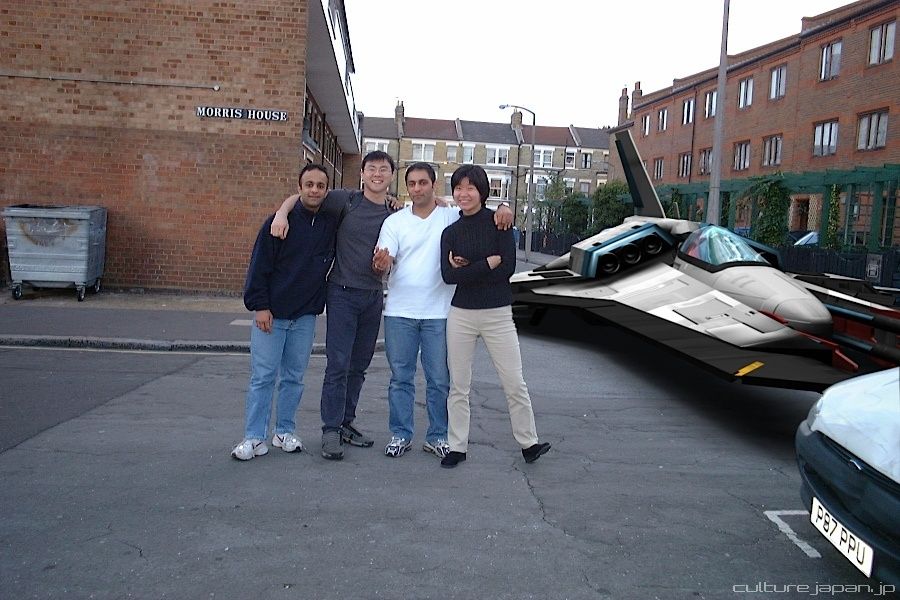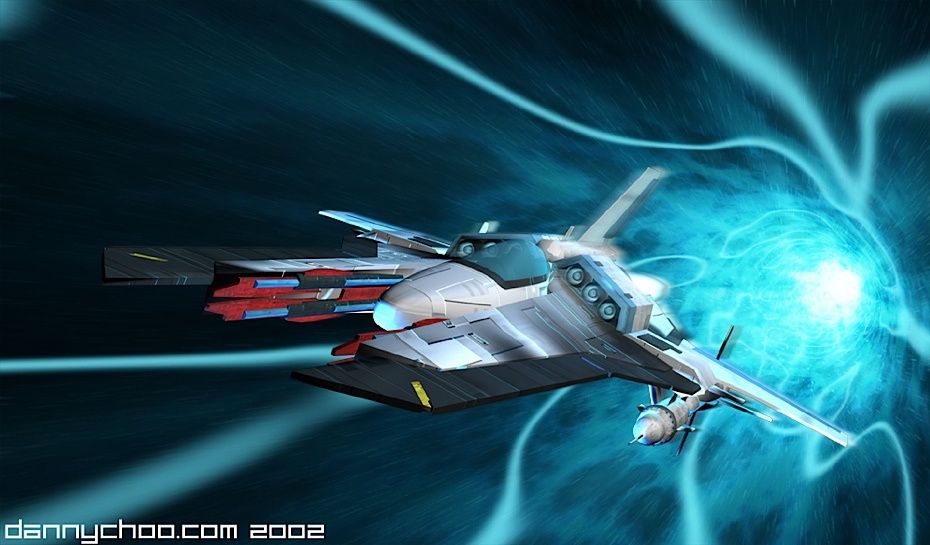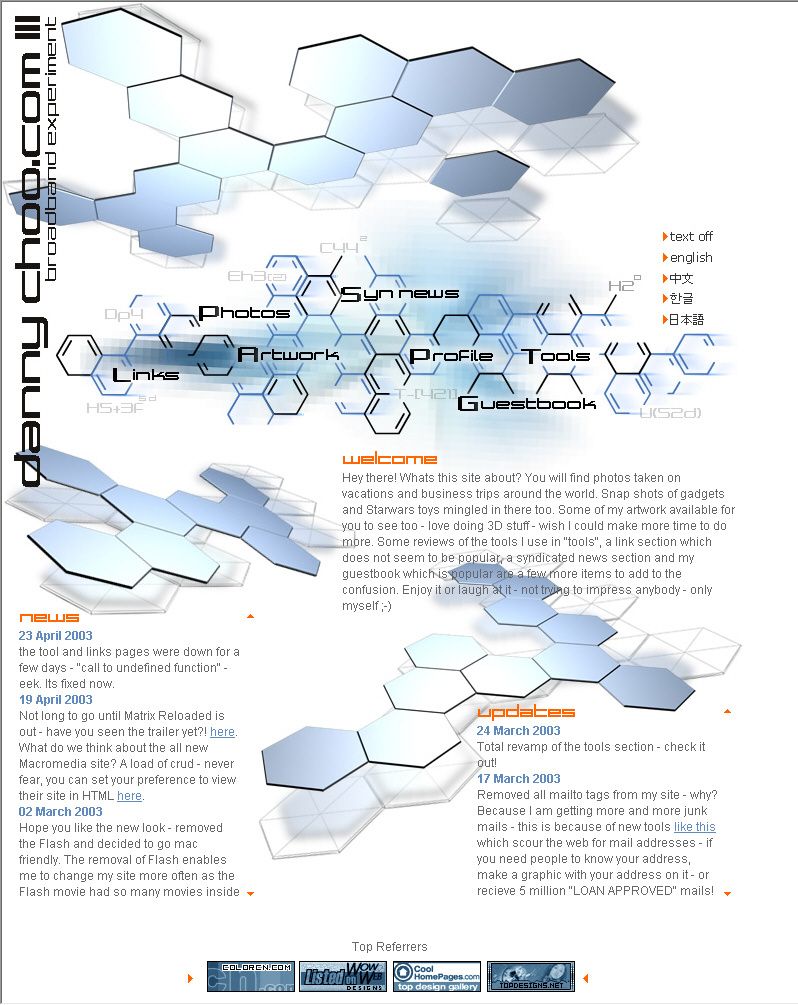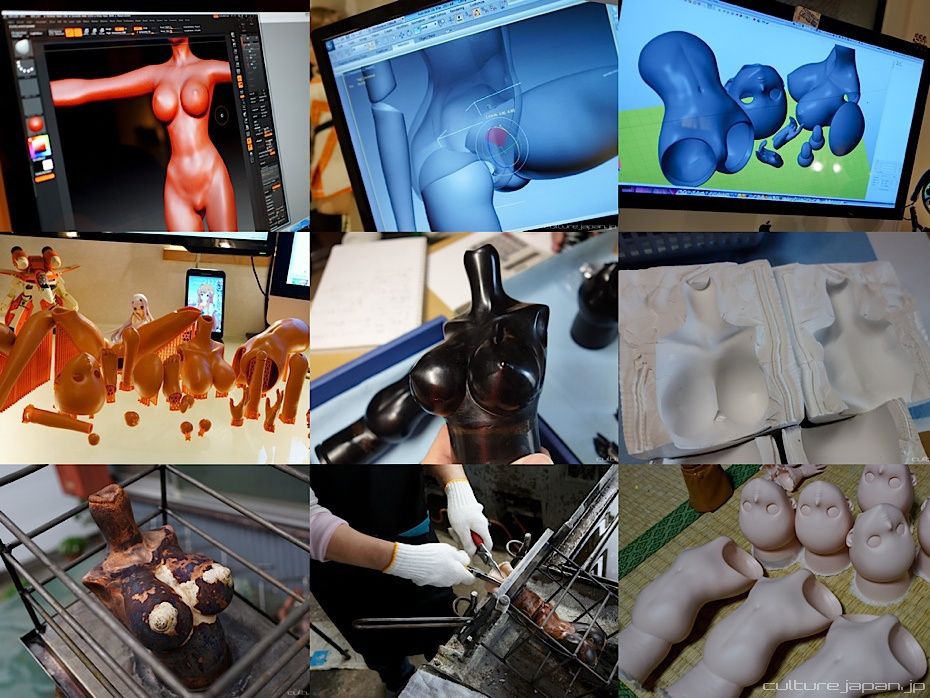Today we are going to talk about Rapid Prototyping - techniques and technology which allows us to quickly develop physical products from 3D data.
Much of this technology is available to us mere mortals and allow us to develop and produce products that could someday change the world.
3D Printing in Japan
You know - I really like dolls. I like them so much that I've always wanted one of my own mascot character. I did ask a few manufacturers but nobody was interested in making one - so I decided to make them myself just like my line of T-shirts ^^;
Introducing a doll of my mascot character Mirai Suenaga which we have been working on using Rapid Prototyping. For a first attempt I think she's kinda cute ^^;
Not sure why but there are many BJD (Ball Jointed Doll) doll manufacturers in Korea. I was there for a bit last year to learn more about various doll manufacturing processes and visited a few of the makers including SQLabs. It was on this visit where I started to get the idea of producing my doll using CAD instead of traditional manual sculpting. Many of the Korean companies sculpt their dolls using CAD (Computer Aided Design).
I decided to base the looks of my doll on the illustration of Mirai by Japanese illustrator Iizuki Tasuku-sensei. We took the illustration of the eye and stuck it in a resin. I generally prefer my dolls to have resin or acrylic eyes instead of printed eyes.
And this is what she looks like! Its my first time making a doll so the first attempt is certainly nowhere near the level of the other doll companies ><
There is so much to learn including material properties (expansion/shrinkage/strengths etc), breaking points, friction calculations and the list goes on - but Google sensei is always there to help and we'll improve as we go along.
There is so much to learn including material properties (expansion/shrinkage/strengths etc), breaking points, friction calculations and the list goes on - but Google sensei is always there to help and we'll improve as we go along.
Eventually I decided that we would do everything in 3D. Sculpting it by hand would have taken close to a year and any changes would have been an absolute nightmare. Just imagine I wanted to shrink or expand everything by a few %!
The software we use to sculpt the body is ZBrush which is typically used for movies, games, and animations. Its a great package for sculpting and perfect for making a shapely doll body which is very very important.
See how it was used in movies such as Tron and Avatar below.
See how it was used in movies such as Tron and Avatar below.
Once the body is sculpted, we cut it up!
Now that all the parts are cut up, we can focus on making each piece fit together in a way so that it can be articulated. I decided to make the oppai Mirai sized ^^;
Then the data is imported into 3D Max for various tweaks and to make sure everything moves and fits together.
While I did use 3D Max many moons ago, my Art Director Pinax did the modelling while I supervised the aesthetics, movement and development flow.
The face is mostly generated by a system that we created using morph targets to generate faces ^^ This over here is a test which shows 5 main targets being the two eyes, cheeks and mouth with a bit of texture mapping. We can move the targets around manually or enter numerical value to modify the look of the face.
This is an example of the morph targets in action - the head on the far left is an extreme example with huuuuge eyes ^^;
From now, when we want to make new faces, all we have to do is change values and 3D Max will do the rest - no more sculpting!
From now, when we want to make new faces, all we have to do is change values and 3D Max will do the rest - no more sculpting!
If you take a photo of yourself and mirror one side of it, you will notice that you look like an alien as both sides of our face are different. This rule applies to dolls too which is why many computer generated dolls look odd. When faces are sculpted in 3D, in most cases, one side is sculpted and then just mirrored.
Our system purposely makes both sides of the face look slightly different - just like a human. Faces sculpted by hand will naturally be different on both sides - so if you ever make a face in 3D then take note!
As for our system - I'm thinking that maybe we should distribute it for free so that you can make your own faces too. But need a way to do it so that you dont need 3D Max which costs 3 arms and a leg. All you would then need to do is print the data, sand down, spray and do a Face Up. Face Up is the term used to paint a dolls face.
The face is the most important part of the doll. It is said that 80% of doll buyers decide whether to buy a doll depending on the looks of the face alone.
As the face is the most important, we make sure that we go overboard with the amount of polygons available on the surface for a smooth finish.
We made the hands using bones meaning that we now dont need to sculpt hands again - all we do is to move the bones around and after a few tweaks its ready for printing.
Using Netfabb to prepare the data for printing. All pieces have to fit within a certain area depending on the printer being used.
The output is an STL file which is short for STereoLithography that is widely used for rapid prototyping and computer-aided manufacturing.
We use an Envisiontec Ultra rapid prototyping machine to print the parts. The video below introduces you to the technology.
And the following video goes into more detail as to how the parts are printed.
The bits that you see attached to the hands are called support structures.
How the printer works is that a DLP (Digital Light Processing) projector projects a slice of the 3D model downwards onto a bath of liquid resin which contains a built plate. The area exposed to the light hardens and the build plate moves down into the bath by about 0.2mm where the process is repeated until the model is complete.
Depending on the shape and because the model is built on a plate, support structures have to be created to support the weight of the model. You can read more about this process at Wikipedia under Photopolymerization.
How the printer works is that a DLP (Digital Light Processing) projector projects a slice of the 3D model downwards onto a bath of liquid resin which contains a built plate. The area exposed to the light hardens and the build plate moves down into the bath by about 0.2mm where the process is repeated until the model is complete.
Depending on the shape and because the model is built on a plate, support structures have to be created to support the weight of the model. You can read more about this process at Wikipedia under Photopolymerization.
The finish is very smooth but not babyskin smooth and if you look closely at the thumb you will see some staircasing (stepping, steps). The resin is easy to sand though. many of the printing companies (including Envisiontec) claim that the surface requires little or no treatment - not so as you can see from the following photos.
Still, the resin is easy enough to work with so I'm not complaining ^^;
Still, the resin is easy enough to work with so I'm not complaining ^^;
The support structures can be easily snapped off by hand - the remaining bits have to be snipped off and sanded down.
This is the bottom half of the leg. The bigger and heavier the parts are, the bigger the support structures become.
Putting together the arm.
Whenever we print models, we always make sure that large objects are hollowed out or it becomes prohibitively expensive - there is no point paying for resin thats not needed inside the model anyway. This can easily be done in 3D Max using the Boolean Subtract Command - the video below explains how this is done.
Torso with support structure...
...and after the support structures have been snapped off by hand - the rest need to be snipped of and the surface sanded down. Using some techniques from my old Gundam tutorial, the surface will be made babyskin smooth.
Support structures are usually added by whoever is doing the printing for you. Even though many of the 3D printers are developed outside of Japan, Japan has many 3D printing services as you can see from this search result.
Most places also state the price too. All these parts cost me about 100000 yen to print.
Most places also state the price too. All these parts cost me about 100000 yen to print.
I had a look at printing services outside of Japan and most of them are "contact us for a quote" and never state the price.
The support structures inside the torso turned out to be thicker than I imagined.
When removing support structures, always be careful when snipping as they fly all over the place.
I designed the oppai to cover up the split between the torso so that it would look good in a bikini. This type of joint also allows for dynamic poses too.
And this is Mirai-chan's head - very light sanding needed.
Coming along nicely ^o^
Now to place all the parts together to see if everything fits.
If I wanted to make different bust sizes, all I need to do is model them in ZBrush and convert to STL format then print.
Sitting pose. Designing a doll is a challenge to strike a balance between articulation and aesthetics. Which is more important to you?
Disassembled and time to sand down the surface and apply a primer.
Messy workspace ><
And this is what my Mirai looks like after sanding down, priming and a few cans of spray paint. The surface looks a bit blotchy due to some dodgy sanding work though ><
The eyes were made by a friend out of resin - I just passed her the illustration of the eye. The Face Up done by another friend too.
The eyes were made by a friend out of resin - I just passed her the illustration of the eye. The Face Up done by another friend too.
At this stage, I think you can tell that I'm being slightly mum's the word about the nitty gritty. I will give you more details when the bird lime is right.
And this post outlines the other type of rapid prototyping that is available to us - was made for me when filming Culture Japan season 1.
While we are on the subject of 3D, I thought I'd dig up some of my old 3D Max projects. This image is my first ever render after studying the basics of modelling, shadows, lighting and reflections. Kinda embarrassing piece of work to look at now but we all got to start somewhere ^^;
I took Japanese and Korean language at university so didn't have the chance to learn computing academically. Luckily I had the help of search engines to help me learn 3D Max from the internets ^o^
I played with 3D Max for quite a bit and my skills slowly started to improve over time.
This is one of my jet fighters - the 4 onboard engines enable it to travel into deep space. Here it is in liquify mode out running the explosion of some nebula or something - one of the engine ruptures as it tries to escape ^^;
I called this piece "V-Clone" as it was based on my favorite ship design being the Vic Viper from the Gradius series.
At this time, I got a bit better at rendering explosions - as you can see, I like the ship-trying-to-out-run-exploding-something-and-engine-ruptures theme ^^;
Not to scale ^^;
I liked the V Clone so much that I would use it to travel back to the UK.
I called this piece "slipstream" referring to the tunnel of light that the V Clone is passing through - I remember it taking me absolutely ages to do! Then one day it turned out just the way I wanted - the sense of achievement turned out to be one that I still remember this day - a sunny Saturday morning just before wifey called me over to the living room for lunch ^^;
I posted my 3D work back on this site many moons ago and also rendered some of the UI in 3D too. It was this work that got me a job at Job Dragon which lead me to get a job as Website Manager for Amazon. If I didn't learn 3D Max or share my work online, then my life path may have been very different indeed.
I always encourage folks to spend time learning in their own time from the Internets and sharing their work online - it always always leads to new friendship and opportunity.
At that time I also shared the model data for my 3D max work - and I think I should share the data for my Mirai-chan doll too ^o^
As for the other thumbnails - many of them are cheesy composites of my wife and I in movie style photos - but working on them helped me learn the ropes of photoshop.
Here is another example of some 3D renders I done that I used in the UI of the website. After a while, the content started to increase meaning that this layout became unscalable ><
Anyway, what I wanted to convey in this post is that it does not matter what line of work or schooling you are in - you have absolutely no excuse not to start learning additional skills and you can do so easily from the Internets. Once you have gained new learnings, make sure you share them with others on and offline as it always brings about new opportunities.
This post mainly covered 3D design and rapid prototyping - now that you know what tools available to you, why not try your dab hand at making something that could maybe change the world. Dont rely on anybody making it for you - go and make it yourself!
If you want to mass produce then as long as you have the data then you can easily make moulds - be it injection moulding, cast, slush or whatever.
If you want to mass produce then as long as you have the data then you can easily make moulds - be it injection moulding, cast, slush or whatever.
If you need cash, then maybe try crowd funding on Kickstarter - or go and get yourself a job in a restaurant as a waiter just like I did to make cash.
Here again you can see some of my dodgy sanding work around the back of the head ><
As I mentioned earlier - I'm a newbie when it comes to developing dolls but am learning new things every day so that I can continue to improve her joints and wot not.
Its taken us 4 months to get up to this stage which is a pretty short development cycle - all thanks to technology and an amazing Art Director onboard ^o^
As I mentioned earlier - I'm a newbie when it comes to developing dolls but am learning new things every day so that I can continue to improve her joints and wot not.
Its taken us 4 months to get up to this stage which is a pretty short development cycle - all thanks to technology and an amazing Art Director onboard ^o^
But there is also another ingredient - passion. If you are passionate about something, you can make it happen because once you make it a need - you *will* make it happen.
It does not matter if nobody around you believes in what you do - just as long as you truly believe in yourself.
It does not matter if nobody around you believes in what you do - just as long as you truly believe in yourself.
Anyway, I'll keep you in the loop with progress on my Mirai-chan doll and hopefully will be able to introduce you to her at the next anime event that I attend ^o^
If you doll owners have any feedback on design or pose-ability then drop a note below ^o^
Now that you know what tools are available to you - what do you want to try making?
And here is an update! I took the 3D parts and made a molds to mass produce my Mirai-chan! Continue reading here.
